It had all the trappings of a chilling murder scene. Blood staining the powdery spring snow. Imprints still visible from the life and death struggle. The corpse… dismembered. But there was something startling. The culprit had not fled. He was boldly sitting next to the remains, his small black eyes gazing fixedly from within a ghostly pale face. He was a male barn owl. And he had just eaten.
“It was a wing flap that first caught my eye,” explains Chris Brown, TNC’s Utah Director of Stewardship. He’s describing his discovery of the medium-sized owl, sitting, rather awkwardly, in a vacant chicken coop on the uplands of TNC’s Great Salt Lake Shorelands Preserve in northeastern Utah.
“The mosquito abatement folks sometimes keep chickens out here to test for West Nile virus, but when the coops are empty, they can attract birds,” Brown continues. “I guess this owl flew by and spotted a meal inside. With this snowy spring, he was probably desperate to find food.”
As Brown approached the coop, the owl lifted off, swooping low across the field. Brown looked down and spotted the remnants of the raptor’s meal. His heart sank. It was a kestrel. “My guess is that the kestrel was in the coop hunting too, probably trying to catch a smaller sparrow or finch, and the owl came in behind him.” It was nature’s brilliant food chain, unfolding with healthy, brutal success. The owl was playing his part and doing quite an admirable job of being an owl. But for Brown, it was this particular kestrel’s role as prey that was disheartening.
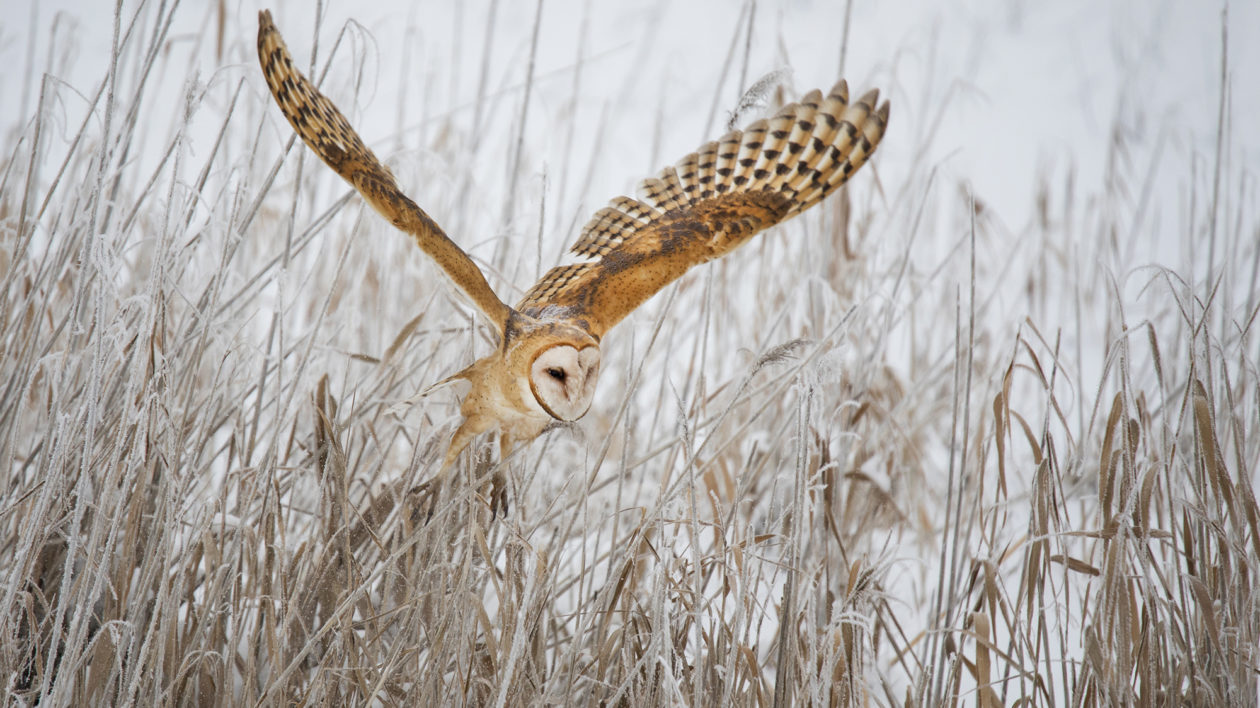
Keeping Up with the Kestrels
During the previous week, Brown had excitedly watched that same male kestrel from his office in a remote hay barn at the edge of the 4,400-acre preserve. The male was flitting in and around a nesting box Brown had mounted on the exterior of a nearby storage shed.
It was the very nesting box that TNC had fitted with a webcam last year — successfully capturing the entrancing story of kestrel parents raising their brood of five chicks — all broadcast live online. “The kestrel cam was such a success last season. We were really excited for the birds’ return,” says Brown. “I was happy to see this male who was hanging around, waiting for a mate.”
Undeniably, the American kestrel makes for a good reality TV star. Charismatic. Colorful. Not afraid of a little drama. North America’s smallest falcons, kestrels are known for the distinctive “eye spots” on the backs of their heads. Swift and lively, these birds are fun to watch in flight, and they are expert opportunistic hunters.
On TNC’s “kestrel cam” last spring, viewers watched the whole life cycle unfold: the male dangling bits of vole to entice his lady into the box, the miraculous appearance of eggs, the frantic parents catering to hungry chicks, and the rapid growth of the young: from fuzzy and wobbly to rowdy and restless, and then ready to soar. It was hard not to fall in love.
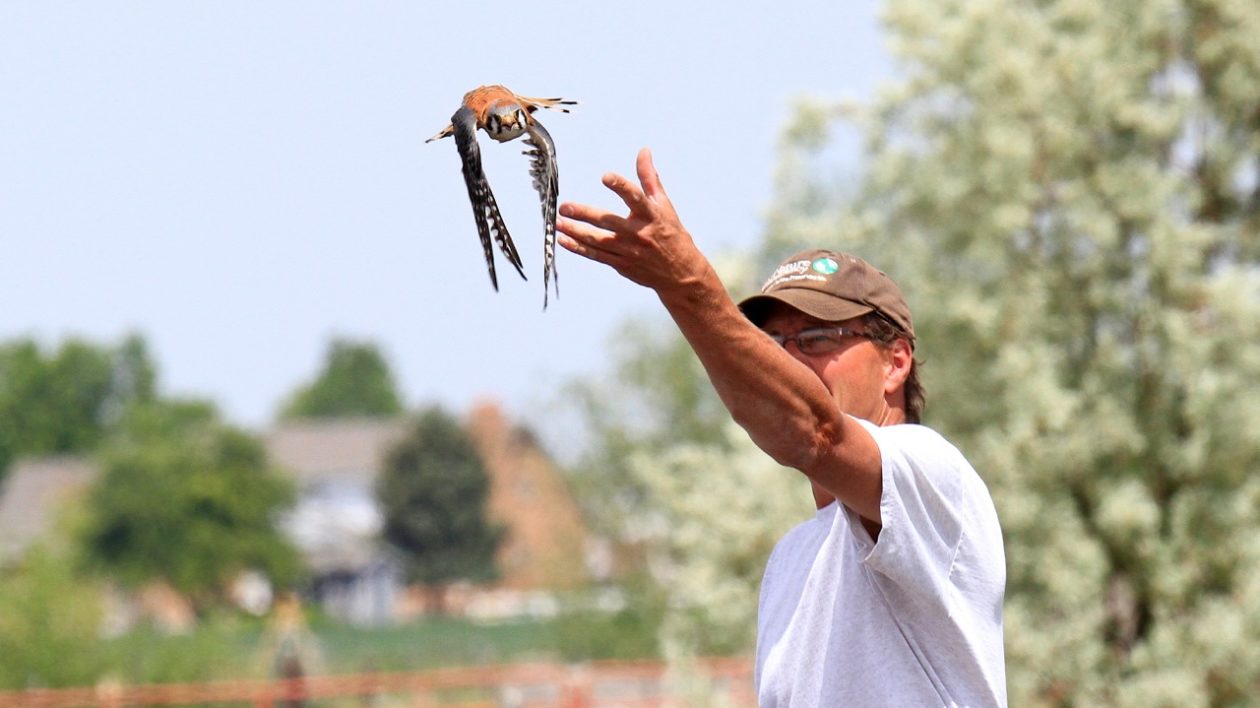
A Species in Trouble
Photogenic bird-appeal aside, the American kestrel story is important for another reason. The kestrels are starting to disappear. According to HawkWatch International, population data indicate long-term declines of American kestrel populations across North America. The causes have yet to be determined, but experts suspect habitat loss, predation, contaminants and competition for nesting cavities.
“As more open spaces are lost, habitats like this at the Great Salt Lake Shorelands Preserve are crucial,” explains Brown. “Kestrels are among the millions of migratory birds who rely every year on the wetlands and uplands that surround the Great Salt Lake.”
So Brown — and many of his TNC colleagues — were understandably excited by the arrival of this male kestrel in late April, seemingly healthy and clearly looking for love. But then came the hungry owl. The male kestrel’s untimely demise was a blow, but nature wasn’t quite done with surprises yet.
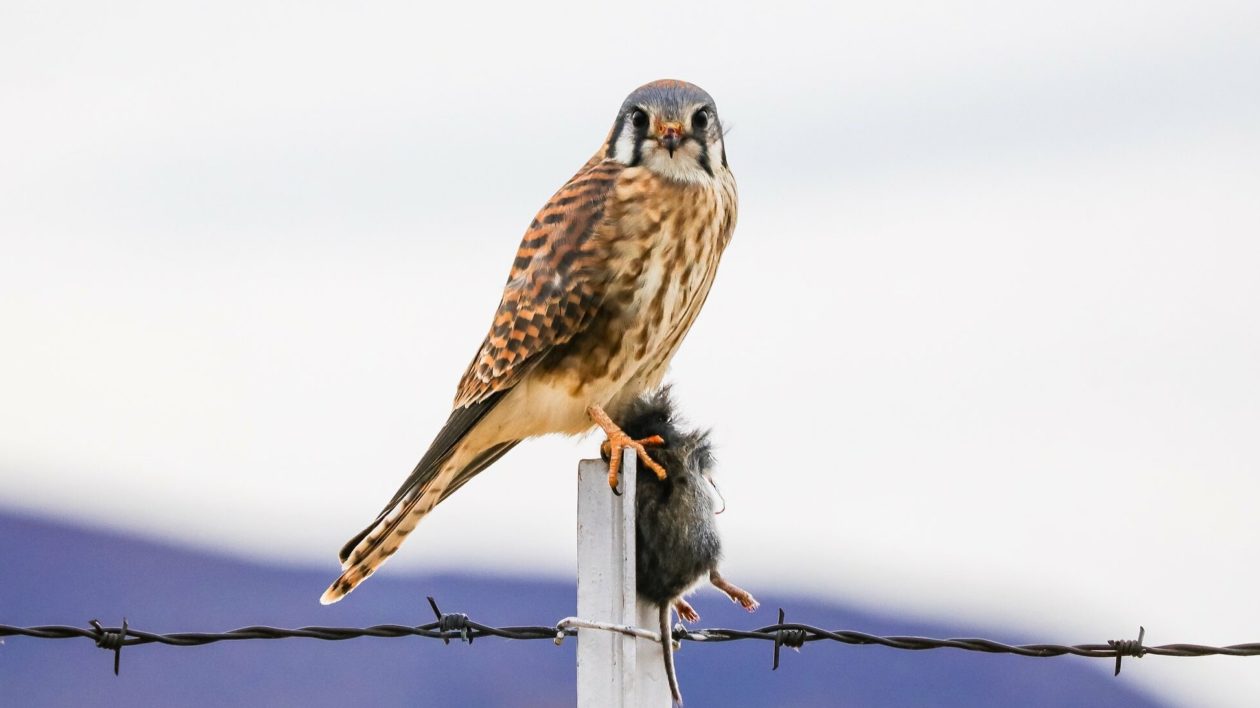
Flickr
Lady Hawk Returns
“I honestly didn’t want to tell anyone about the owl incident,” admits Brown a bit sheepishly. “I knew how disappointed they’d be. So, I waited and hoped.”
Early this May, Brown’s faith in the tenacity of nature was rewarded. One sunny afternoon, as Brown pulled his truck to a stop by the barn… she appeared. It was a female kestrel, easy to identify because she lacked the blue-gray color that males sport on their wings. For a week, Brown watched as she materialized and disappeared, perching on branches, hovering over the fields and investigating different nest boxes.
Kestrels take readily to nest boxes because they prefer to nest in cavities but cannot create their own. Hollow trees, abandoned woodpecker holes, and nooks in rocks and buildings make ideal homes for kestrels. The preserve hosts several nesting boxes, and Brown now watched, anticipation building, as the female took a keen interest in one — the box with the webcam.
“I’m guessing she might be one of the babies that was raised in the box last year,” said Brown. An internet star, returning for an encore. Within a few days, she was joined by a male. Cue the camera — season two of the kestrel cam was now officially underway!
“As of today, we have five eggs,” reports Brown, clearly elated. “They should be hatching soon. I can check the cam again right now!” He pauses, fiddling with his phone.
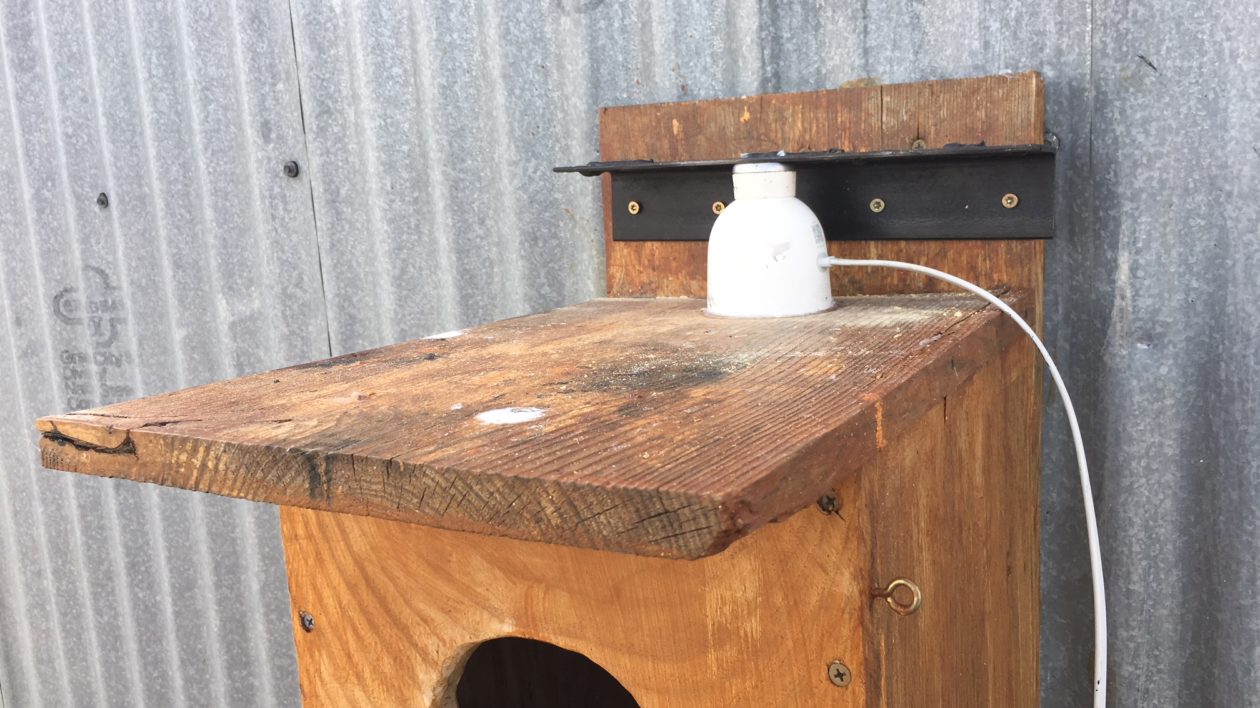
Roll the Cameras!
On Saturday, June 8, Brown and other vigilant webcam viewers got a special treat as the kestrel chicks made their debut. The nesting box now bursts to life during feeding times, anchored by tiny, wriggling puffballs, and insistent peeping. Mom and Dad have their talons full.
While the new family entertains us with their busy comings and goings, Brown and TNC are making plans this season to help the species. Teaming up with HawkWatch, TNC is studying the kestrels at the preserve as part of a larger project focused on learning more about why the birds are in decline.
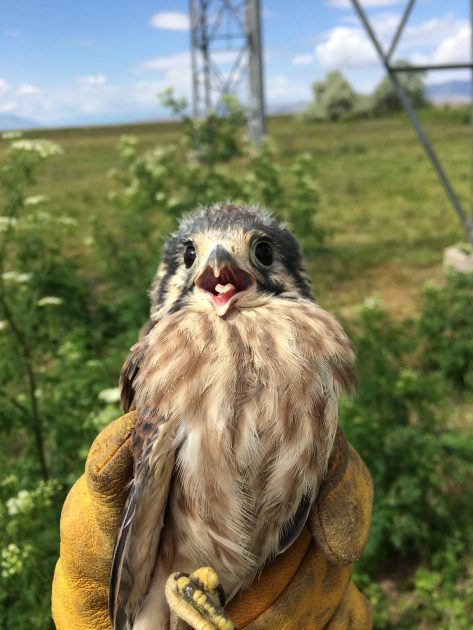
Citizen scientists are monitoring hundreds of kestrels along the Wasatch Front in northern Utah, and HawkWatch will be working with Brown to band kestrels at the preserve to track their movement and survival. “It’s exciting to be a part of the scientific investigation,” says Brown. “I hope we can get some answers and develop new strategies to help these birds.”
Back in the nesting box, despite their late start, the kestrels are thriving. Who knows what drama may yet unfold in their lives or what roles nature might give them to play? That’s part of the magic.
For Brown — and for the many online viewers now tuning in at home — this window into the lives of the kestrels is a little bit addictive… a feel-good kind of voyeurism. It’s also a reminder that humans are not the only ones on this planet struggling to get through the day, feed the family and raise the kids right.
“For a lot of my job, I’m out there fighting weeds and fixing fences,” explains Brown, who oversees management at TNC preserves across Utah. “Coming back here, and watching the webcam, I get transfixed by these amazing little birds, doing courtship rituals, interacting with each other, and reacting to different elements in their world. I’ve learned so much.”
“Plus,” Brown adds with a grin, “it’s fun to peer into their private lives and see what they really do.”
Update: Tune in to the 2023 nest cam in May and June!
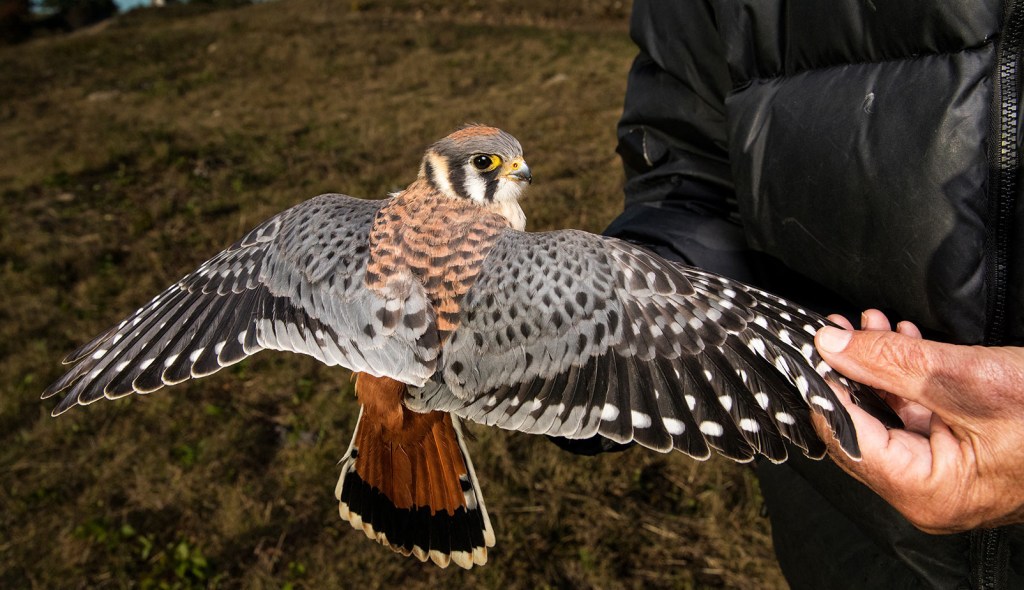



Lovely story and one with a happy ending! Enjoyed the photos as well …keep up the good work while we keep working to help the environment to save us all, birds included!
Reading about the circle of life, in a Kestrel’s world, was a fascinating story. I’ve been observing Cornell’s Cam, Kestrel family in Wisconsin, and seeing them all take flight was amazing. More people need to appreciate the importance of Raptors in our ecosystem. Thanks for sharing… Anitra
Wonderful article !
Thank you
I believe that neonics are the cause of the kestrels decline. They are reducing the number of grass hoppers available, and poisoning the birds directly. T his will continue until the government outlaws these poisons.
David Caccia
It’s wonderful to get this glimpse into a kestrel’s nest. Thank you.
Good story, well-written; sad to hear that kestrels are struggling.
Thank you….
Thx, love this stuff.
Absolutely love your website. Thank you for all you do to make this happen!
It wouldn’t have been as wonderful a story without the return of Mom. Despite what we know as “nature’s way,” — the human heart often roots for the underdog. Glad the nesting house is again a home. And yes, I specialize in anthropomorphic thinking. 🙂
What happened to the babies??? I saw them late last night and today, the nesting box is empty??!!
Very interesting and heart warming.
Until I read this article I hadn’t realized that the Kestrel was declining. I live in an area that has kestrels normally, but has been hit hard by drought in recent years. So I am going on a solo observation for them and will be recording my findings. Where I live there is also a loss of habitat due to homes being built in areas that were formally open hunting grounds. But the good news is, this same area has a lot of horse property and concern about rodent control. I am well known in the area and I speak up about NOT using poison and using predator control instead. I am going to advocate the use of nest boxes. I have been successful before. A local group has formed to replenish our wildlife to prior levels so I will approach them as well. If they’re not interested, I will move forward using the local Girl Scouts for help. My late best friend’s favorite bird was the Kestrel. We graduated with Bach. Science in Biology and became instant best friends during our student years at Cal Poly Pomona. This will be in memory of her, Cquvator Gatson , extraordinary friend, fellow Biologist.
Beautiful creatures – deserving of everyone’s care!
A delightful story, straight out of nature!